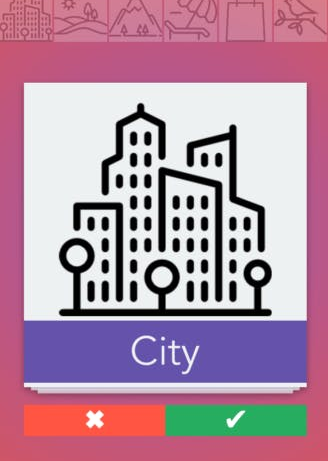Yesterday, we looked at two impressive apps—built in partnership with the White House and newly featured in the App Store—taking on health issues in inventive ways. These apps also happen to be student final projects from Flatiron School’s immersive iOS program!Today, we’ll take a close look at a few more student-built apps using the Swift programming language to make innovations in a very different space: lifestyle. While their purposes may be quite different, the apps still show how far programming students can come in a few months if they’re passionate about learning the craft.
Studio
Matt Amerige, Ismael Barry, Erica Gutierrez, and Joseph Ugowe created Studio to give Vevo users a way discover music videos based on personalized genres, artists, and mood preferences.
Inspiration for the app
Vevo offered this group a challenge: create a more immersive app experience for Vevo users. Unlike audio tracks, music videos are visual. “With this in mind,” Ismael says, “we designed our user interface to create an immersive user experience. Whether a user taps on a genre or mood, an icon unique to that category appears, enhancing the sense of ‘discovery’ for the user.” The Studio group was determined to create a beautiful, intuitive design for the app—its color themes create a contrast among the icons throughout the app, adding a perfect visual cue for user feedback. Ismael continues, “By having the user engaged in our app through beautiful design and personalized preferences, we created a simple and rich experience that keeps users engaged in the app.”As the group members were avid Vevo users before even starting the project, Ismael says it was “a great privilege to collaborate with Vevo. Working with Danny Gallardo from Vevo was an amazing experience.” The team had weekly video conference calls with Gallardo for him to gauge their progress, and they regularly communicated with him over email and Slack. “Danny provided us incredible feedback, recommendations, and guidance. Together, we felt like an iOS Development Team. We were able to apply everything we learned in Flatiron School’s iOS Developer program toward the app and came away with a much stronger understanding of the product management process as well as how to program collaboratively.”
What’s next for Studio?
The team hopes to continue working on Studio. “There are many features we’d love to implement,” Ismael says. “We have plans to create user profiles, so users can see what their friends are watching.” But the group’s ultimate goal? Bringing the immersive Studio experience to users’ televisions via Apple TV.
WanderSpark
Created by Claire Lynch, Betty Fung, Zain Nameed, and Sara Ahmad, WanderSpark (available now on the App Store) makes it easier to be both imaginative and informed about selecting a vacation destination. The group worked with Fuzz, a mobile product agency that has created apps for clients ranging from Disney to Google.
Inspiration for the app
According to Claire, the team “wanted to think creatively about the different elements people look for in their vacations: city or countryside vibes? Sightseeing opportunities or shopping? Being pampered at a luxury hotel or exploring off the beaten track?” Based on the answers to these questions, WanderSpark matches users to destinations they might not have considered. Claire says the most important lesson she learned was how to code collaboratively. “As we progressed with the project, we got to know each other’s strengths and harnessed them to generate the best product we could—under very tight time constraints. It was a pleasure and privilege to watch us come together, take on flexible leadership roles, and support one another in continuing to learn more about code.”
What’s next for WanderSpark?
“There are always improvements to be made,” says Claire—and the team intends to keep implementing them in the future. “I would like to refactor some of our methods and classes to make the code more concise. Toward the very end of the project, I implemented functionality that allows users to save and revisit their favorite destination matches. In order to achieve this quickly, I created an entirely new data model and new views for looking at the favorites. Now, I’d like to better integrate this with the other parts of the app and get rid of the repeated code.” Additionally, the app currently pulls real-time lowest-price flights from the Skyscanner API. “It would be awesome to link this to online itineraries, where people could actually purchase a ticket,” Claire says. “However, the Skyscanner API does not return a URL, so we’re looking elsewhere to find that data.”
Learning to code
The WanderSpark group members had little to no previous experience coding before attending Flatiron School. “For me, personally, I always toggled between creative pursuits and super structured, logical ones,” says Claire. “I love to paint and draw—I was recently taking watercolor classes at the Art Students League. But I also love math and science—my instructor Johann can definitely attest to my nerdiness in this regard! So coding really feels like a perfect fit for me. It takes artistry, but you have to stay organized and work within well-defined, strict boundaries.”
Place
Eldon Chan, David Park, and Alex London partnered with Venmo to create a companion app for the payment service.
Inspiration for the app
“As users of Venmo, we noticed that our friends sell and buy items through Facebook marketplaces,” says Eldon. “But while purchasing in Facebook groups is convenient, there are often scammers to worry about—so why not only deal with your friends?” Place aims to create a centralized marketplace in the form of an app utilizing Venmo as a payment system. The process was a tremendous learning experience for the group. Eldon explains: “The biggest challenge we faced was when we realized how difficult it is to create a social platform. During our testing phase, we hit our limit on Firebase database on multiple occasion because of the constant uploads and downloads. However, it was a great experience to be able to work through the issues and learn the ins-and-outs of what makes a great social marketplace.”
What’s next for Place?
The group plans to continue to work on Place after its launch on the App Store. “Some future features we plan to implement include a search function, direct messaging capabilities, the ability to upload images from a photo gallery, and much more.”
We’re profiling two more amazing apps from Flatiron Students tomorrow, so stay tuned. If you're interested in creating your own iOS apps like these, take a look at our brand new Swift course.




